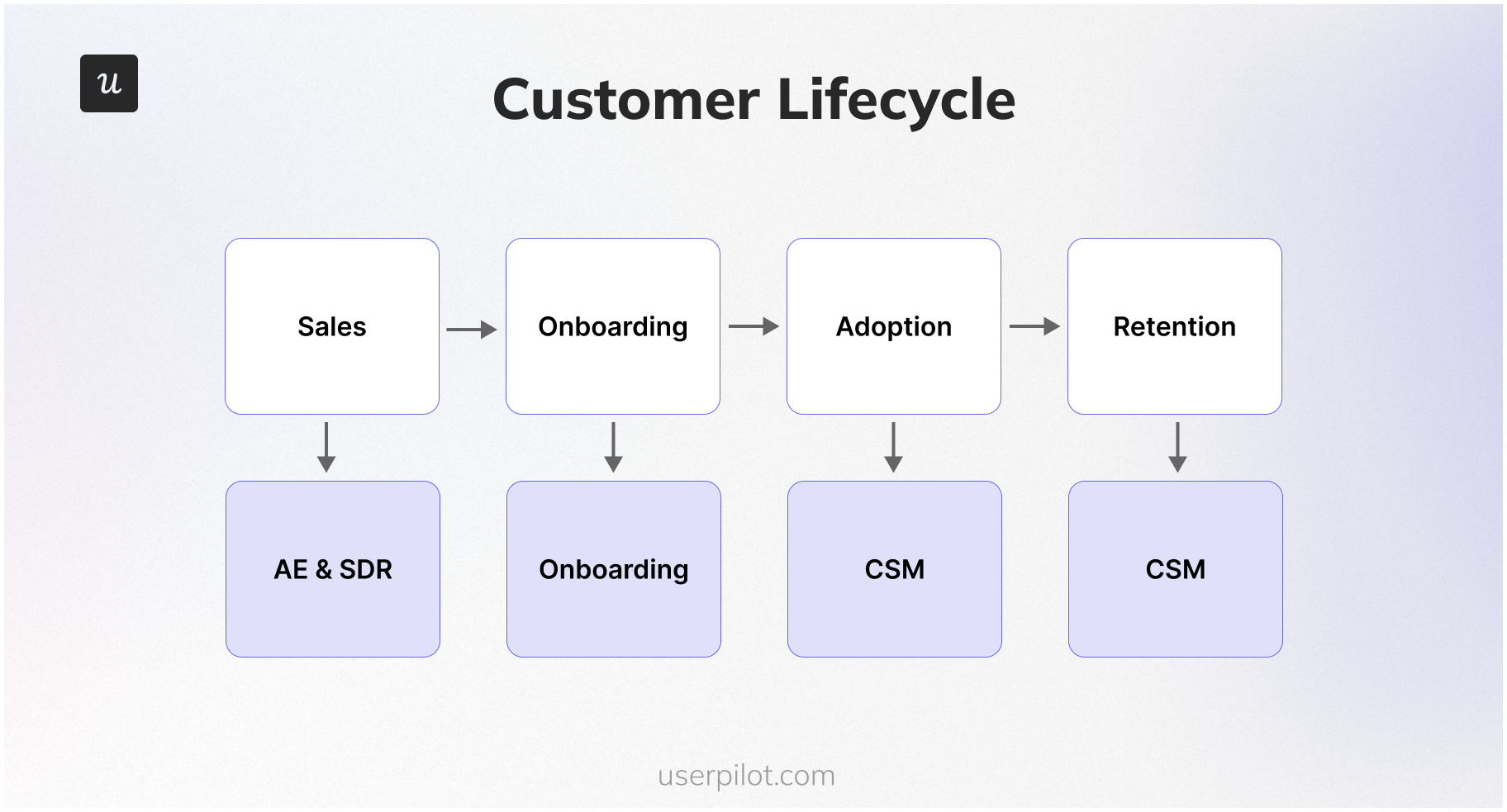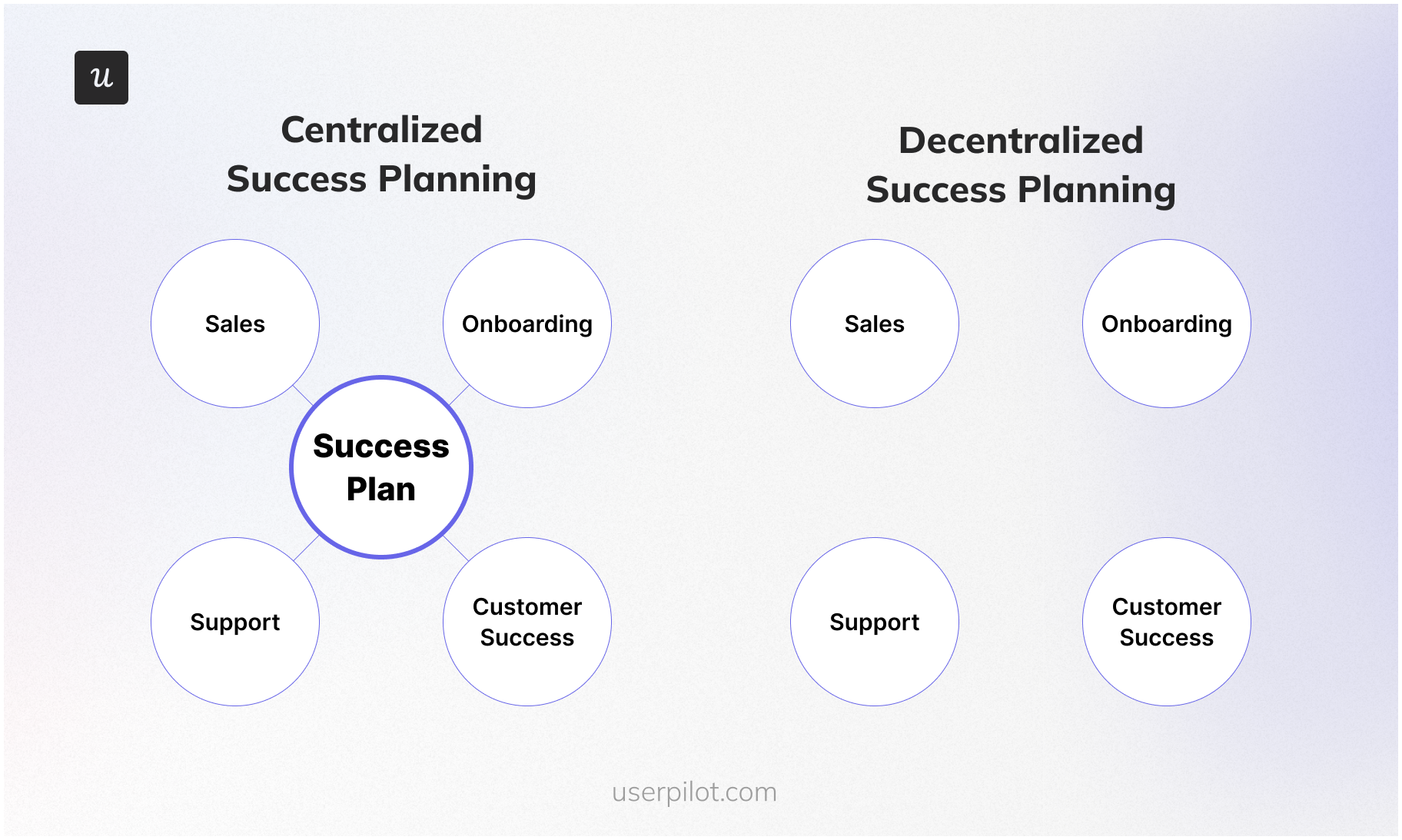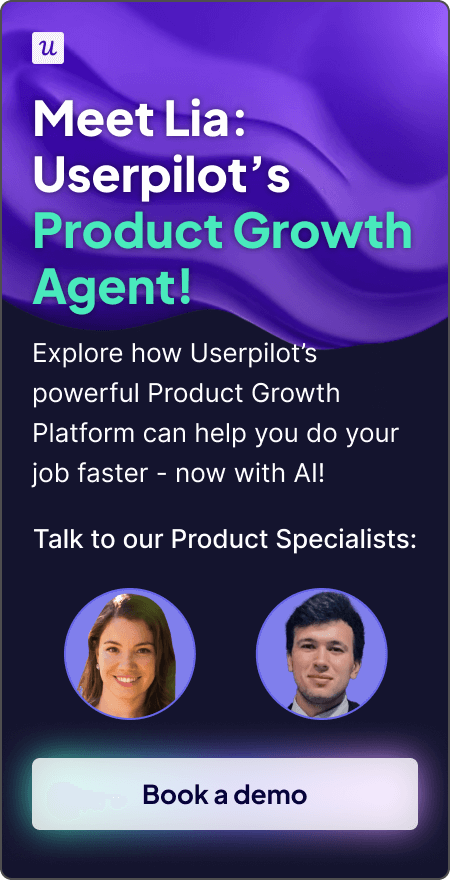Inside Userpilot’s Retention Strategy: What’s Driving High User Stickiness
What does it take to grow your business and achieve a Net Retention Revenue of 98-99.9%?
Since 2018, we went from building an onboarding product for startups to offering a full suite of PLG tools to mid-market companies and enterprise accounts.
However, in my experience as Userpilot’s Head of Customer Success, I know that this level of growth and retention doesn’t come from just having an excellent product. Fast growth is the primary cause of many of the challenges for most businesses, including ours.
You see, it’s great for the business when the volume of new customers with bigger ACVs increases. But, it’s also a tremendous challenge for us CS people to prevent a steep drop in retention rates (and you know how central retention is for customer success).
Our standard operations needed to adapt, and many challenges appeared when doing so:
- Gaps in customer relationships across the existing business lifecycle.
- Not effectively delivering value at each touch point.
- Lack of strategic customer engagement.
- Poor system visibility and telemetry.
These were tough problems, but after implementing some tweaks to our mindset and processes, we managed to increase NRR by 2% over the last 8 months.
So now, this is my time to spill the beans on how we managed these challenges and my best practices for overcoming them:
Try Userpilot Now
See Why 1,000+ Teams Choose Userpilot
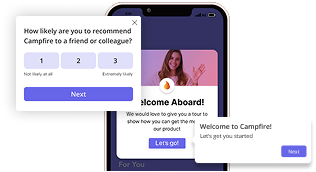
Challenge #1: Poor customer relationships across the existing business lifecycle
Saying customer relationships are important for retention is redundant. Worse, it’s that type of advice that’s easier said than done.
In Userpilot’s case, the baton was getting lost in the relay of processes and teams that handled our customer base. And as we all know, ensuring cohesion is essential for customers’ success.
This isn’t a new challenge in SaaS: a new customer gets passed from SDR to AE to Onboarding to CSM, and each time, context gets lost. Goals get repeated. Expectations shift. And no one’s quite sure who’s accountable for what.
This is an easy way to lose track of data and deteriorate relationships.
To fix this, controlling information transfer and managing accountability was our utmost priority. Which led us to two very simple yet effective solutions:
The success plan: our single source of truth
Although many would consider it a “nice-to-have”, I believe using Dock to create our success plan was essential for our NRR growth.
The reasons are simple:
- It helps create a shared document between our teams and the customer. This way, we can track the customer goals, objectives, value prop, as well as where they need to be in 3, 6, and 12 months.
- Once onboarding has completed their work, they can hand this Dock over to the CSM with all historic info and work completed available and nothing gets lost along the way.
- It acts as a hub between the customer and the team, keeping us (and our customers) accountable for the work needed to ensure they get what they wanted when signing up.
Think about it, customers buy your product to solve a problem that will require work on both sides to complete. Without a central success plan, you can’t keep everyone accountable to that work, the value will fall through the cracks, the relationship will drop, and an NRR issue starts to brew.
Identifying roles and expectations immediately
Along with the success plan, we also made sure that ownership was clear from the moment the deal closed.
As soon as a new customer signs, we trigger an automated HubSpot workflow that introduces both their Onboarding Manager and their CSM in the same email, along with a shared calendar link for their kickoff.
CSMs should lead accounts from day one, because they will own the account long-term, acting as quarterback. We also need to kick off immediately after signup while customer excitement is high. The CSM should be here too to introduce themselves as the trust-worthy point of contact, and also to ensure they are up to speed with the customers’ needs and goals.
For the kick-off call:
- Introduce the CSM and explain team roles.
- Conduct discovery to create a success plan with goals, metrics, and 3/6/12-month success definitions.
This approach minimizes handoffs, improves accountability, and maintains focus on the customer’s original objectives.
Challenge #2: Not effectively delivering value and ROI
Our customers come to us because they have a specific Userpilot-shaped problem that needs solving. Nothing more, nothing less.
This applies to everyone. The moment your product no longer fits the problem or brings any value, then there’s a churn risk.
That’s why everything we do in the CS department now must be strictly tied to delivering value. If you’re not 100% laser-focused on solving high-level problems and ensuring your product brings ROI to the table, then:
- Your CSMs will just become another support function.
- You’ll limit your success process to just fixing product issues.
- Your customer will, at best, make some use of your product for a while until they no longer see a need for it.
On the other hand, “delivering value” results in a complete mindset shift. This is what it meant for us:
- Empowering champions with a clear ROI narrative. It’s also our job to make it easy for champions to advocate for us internally. That means giving them the language and the proof points to say things like “Userpilot is helping us activate users 30% faster.”
- Moving from “support mode” to strategic enablement. While CS will also have their share of troubleshooting scenarios as part of their roles, it’s not the main purpose. Instead of saying “here’s how to fix that”, you should ask “What are you trying to achieve? What does success look like here?”—It must tie back to customer value.
- Focusing on ROI instead of usage. The mindset shouldn’t be “they’re using the product well” but instead “they are using the product well for what they want to do”. Everyone is different, so you could have customers using your full suite without getting anywhere. Likewise, you will also get successful customers who use your product for a wild use case. In both cases, we need to meet the customer where they are and tie our guidance back to their definition of success.
Challenge #3: Lack of strategic customer engagement
“Hi, I’m from ____, just checking in, how are things?”
It’s the kind of message every CSM has sent at some point. We used to send a lot of them at Userpilot, and I think it’s fine from time to time with a customer you already have an excellent relationship with.
But sending this to a customer you haven’t heard from in months? Well, you’re not getting a response.
And I get it, I was given 700+ accounts to manage at one point in my career. So how did I deliver valuable messaging to each one?
Well, I certainly couldn’t do it on a 1:1 level. I followed a scaled, segmented, and strategic approach that can be implemented at any scale.
What we did was look at our CSM-owned account list and began segmenting based on spend, health score, and renewal dates. Every CSM, Onboarding Manager, and Pro-Services teammate should look at their books and see these three customer segments:
- P1 customers. High-value, high-impact customers we have to know inside out. One of these customers could be worth 5x what one of the P3 customers is in terms of revenue. This means we absolutely need multiple champions, multiple team use cases, accountable success plans, as well as varied means of communication like in-app, email, and Slack channels.
- P2 customers. These are customers that in a year’s time could become a P1 or a P3. The CSM will need to use judgment here to decide how to approach them.
- P3 customers. Smaller or more stable accounts, we support them through automated in-app messaging, and delivering value at scale, while still remaining their go-to consultant when needed for more 1:1 work.
When dealing with P1 customers, no interaction happens by accident. We:
- Turn on Google News alerts for each of them, understanding their company and individual wins and losses.
- Let them know first about our upcoming product innovations, beta features, and product roadmaps.
- Travel to see them in person.
At this level, we aren’t just a supplier. We are a partner, a strategic consultant, and their expert in our field.
As for P2s and P3s, we lean heavily on in-app engagement through Userpilot. This includes:
Communicating with your point of contact
Sending an email to your usual point of contact isn’t enough. What if it’s the wrong time? Maybe they aren’t focusing on this right now?
To bypass this, we use Userpilot to send in-app messages to specific audiences and trigger them based on in-app events. It lets us reach the right people at the exact moment they need it.
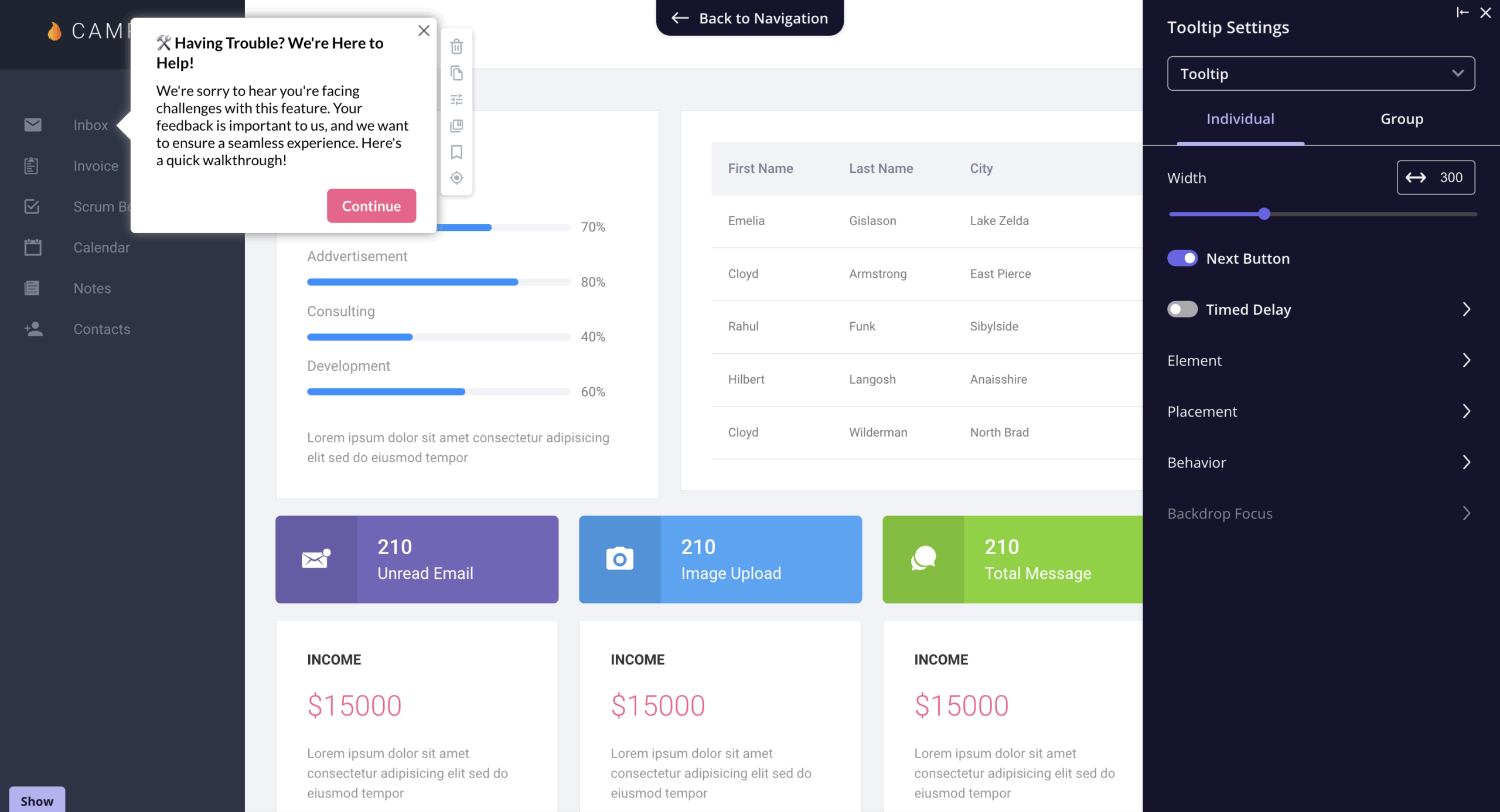
Just be aware that these in-app messages must provide value in some way to not come off as a distraction for the user (forget just “checking in” on these).
Nurturing your champion
“My champion doesn’t answer my email.”
If they’re your champion, you can leverage their information (what they purchased your product for, where the value is, etc.) and create a quick Loom video for account review or optimization, addressing their specific goals and use case.
Then, you can send this content to active users inside the platform with Userpilot’s in-app messaging features. Maybe your current point of contact is not the person using the product every day, and someone you don’t know would benefit from this engagement too (strengthening the relationship).
This connects to the other use case:
Spot users who need your strategic support
Again, your point of contact might not even be the one logging in every day. So we use Userpilot’s analytics to:
- Identify power users and advocates.
- Detect unhealthy usage patterns early.
- Tailor messages directly to the actual users.
- Engage new potential champions organically.
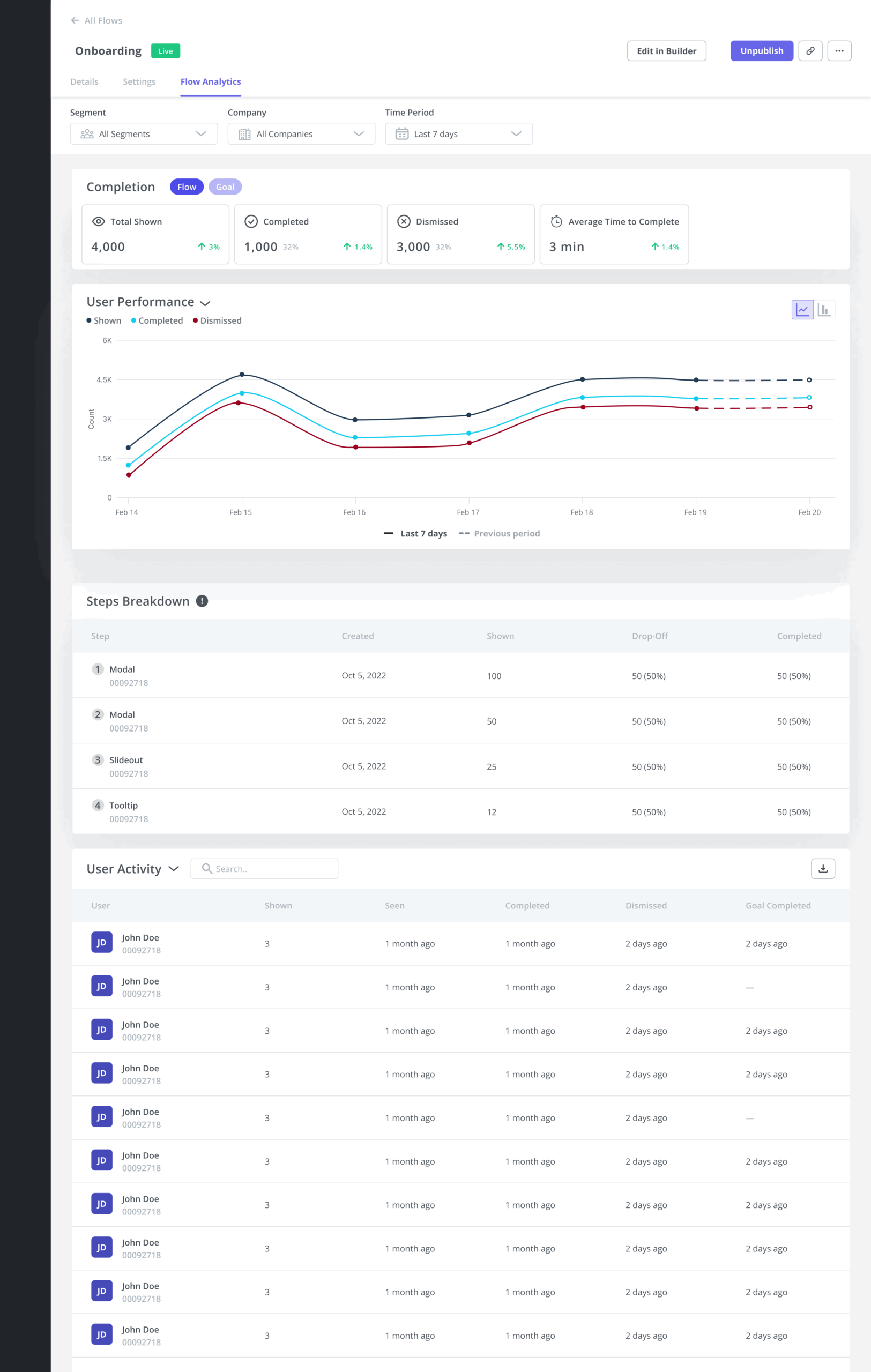
This shift from reactive to proactive support has been massive for us. I learned that this isn’t about reaching out to 700+ accounts, but about timing, relevance, and value.
My essential tools to improve retention
Now, here are the tools we rely on to make it all happen:
In-app engagement and user analytics: Userpilot
Shocking, I know.
But hear me out, the best time to speak to someone about your platform is while they are on your platform. This means you absolutely need visibility on product usage metrics, as well as a means to reach customers in-app based on their behaviours and preferences.
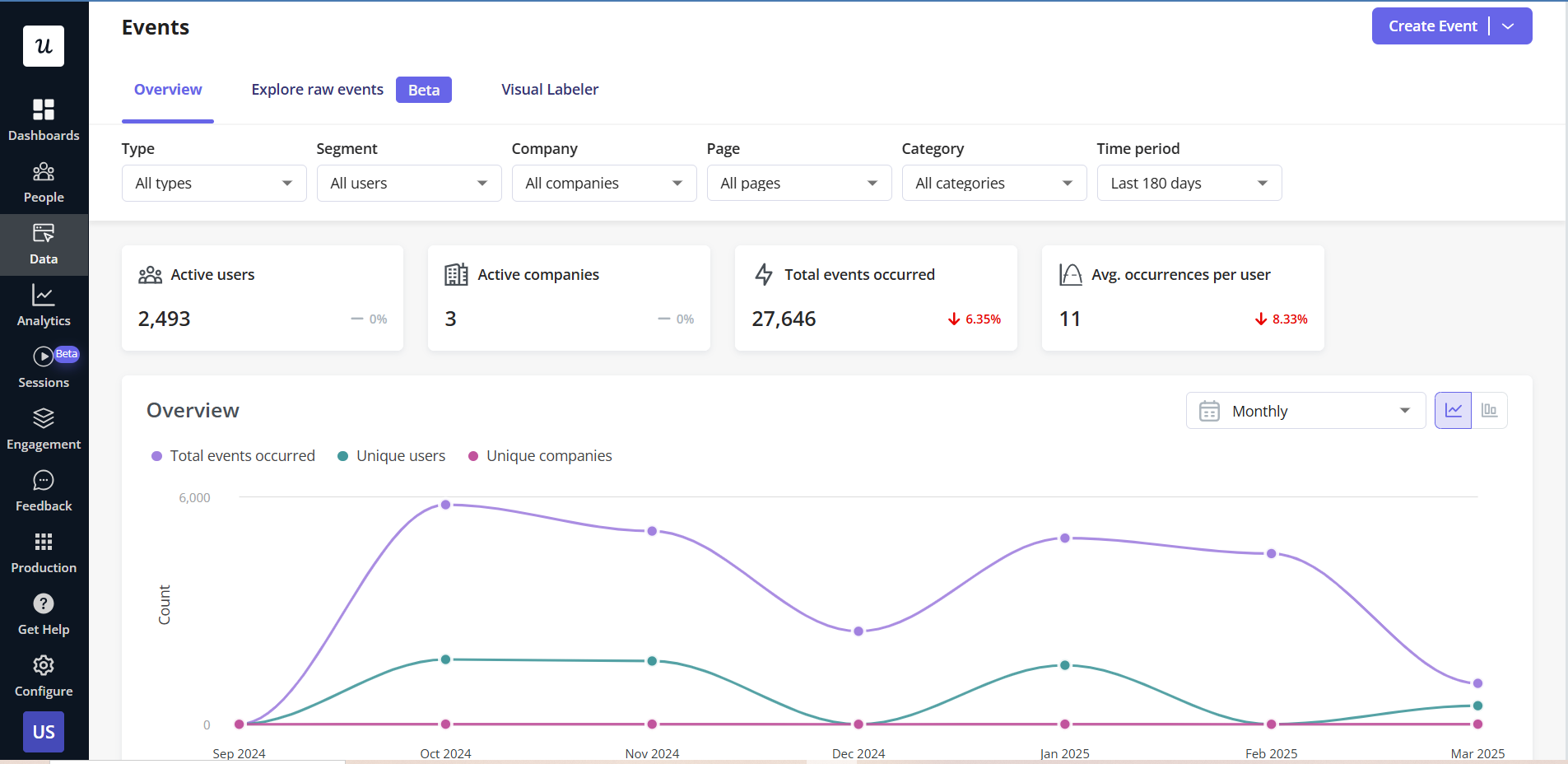
Userpilot gives you enough intel to know exactly what value looks like to a customer, deliver context-aware messages, segment audiences (by role, stage, health score, etc.), and track trends in product usage to follow goal progress.
A CRM for customer lifecycle management: HubSpot
Although it’s a very standard platform, you’ll need a CRM anyway, and HubSpot does a good enough job for us. It’s where sales, onboarding, customer success, and support all plug in, giving us full 360° visibility into all customer-facing teams.
We use it for onboarding tracking, renewal planning, healthscoring, activity, and usage visibility. This involves monitoring dashboards to view renewals by different metrics such as health score or your CSM’s sentiment, depending on what can effectively reflect renewal likelihood.
A Success Planning tool: Dock
I already mentioned how we use Dock for success plans.
And as I said, customers have problems that require work from both sides. So, rather than a nice option, I think Dock is a complete necessity to keep the success process as easy as possible for customers, which should be your priority.
Plus, it makes success plans easy to make, track, and share with customers. It gives both our team and our customers a live, central workspace that shows:
- Key goals and KPIs.
- Milestones, pending tasks, and responsibilities.
- Meeting schedules.
Plus, it also serves as a valuable reference at renewal time that keeps everyone accountable. It shows what you were able to achieve, why a specific goal wasn’t achieved, and lets you analyze why something went wrong or how you can replicate a successful experience.
A content creation tool: Loom
Loom videos are often scrappy, unpolished, and sometimes improvised—and I think that’s why I’ve found so much success with it.
You see, customers are already exposed to beautiful content from marketing. This means whenever they see a real person talking about highly specific problems to them and their use case, it stands out. The customers see your face, know you, believe in you, and trust your advice because you went out of your way to make a digestible piece of valuable content for them (especially in this AI-flooded world).
Think of it as a more efficient alternative to a meeting. But you can share it with multiple users, and customers can consume it at their own time, it’s the best you can do to scale personal help.

